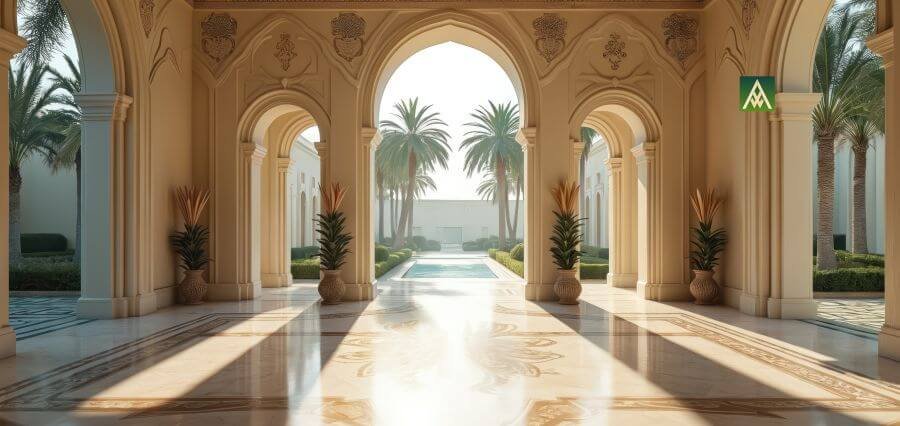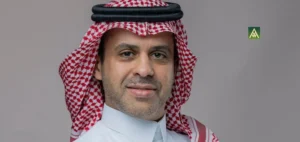The Art of Prestige
Over the past years, the Middle East has become a world leader in luxury hospitality. What distinguishes this region is not only huge budgets but a sophisticated combination of cultural sensitivity, technological advancements, and strategic visioning. This article covers how the elite of this region are developing hospitality management plans, which presents a different level of prestige.
Cultural Storytelling as a Strategic Pillar
Cultural storytelling lies at the foundation of such hospitality management strategies. Other luxury brands such as Jumeirah, Royal Mansour, and Al Bait Hotel are investing in embodying the local heritage in their buildings. For instance, Royal Mansour in Marrakech demonstrates the stellar Moroccan craft via exquisite tileworks and design, making each visit a cultural experience. Likewise, Al Bait Hotel in Sharjah promotes the renovation of an entire district and the preservation of architectural authenticity, strengthening immersive guest experiences.
These narration structures are used both to differentiate and to emote attachment, supporting brand loyalty. Therefore, the combination of local ethos is one of the pillars of elite hospitality management strategies.
Wellness and Sustainability: Core Differentiators
Health and environmental awareness have shifted into a necessity rather than a fad. The pandemic enhanced the significance of wellness-based travelling, as the top crust of society in the region was quick to adopt. Family-focused resorts such as Zulal Wellness in Qatar follow through with multi-generational programming and family stays, with Saudi initiatives, including Red Sea Global ventures, prioritizing eco-friendly construction with massive coral regeneration and renewable energy infrastructure.
Further eco-luxury resorts, like Six Senses Zighy Bay in Oman and Zaya Nurai resort in Abu Dhabi, illustrate how wellness, eco-friendly design, and high-quality services can be perfectly combined. They represent hospitality management policies toward sustainability-seeking guests.
Digital Innovation and Hyper-Personalization
Modern luxury is based on advanced technology. Luxury operators in the Middle East, including concierge systems based on AI, mobile check-ins, voice-controlled smart rooms, and VR-supported experiences, are being embraced. As an example, the Burj Al Arab uses artificial intelligence butler services, whereas regional hotels have smart lighting, in-room tablets, and have an app-based control system, all part of the region’s elite levels of hospitality management plans.
Improvements are not limited to guest interaction. Revenue management and predictive analytics applying AI aim at optimizing price, staffing and guest preferences. Hotels can also develop ultra personalized experiences based on the data, including favorite pillows to pre-set tours. These hospitality management strategies based on personalization build loyalty and distinguish high-quality brands.
Mega-Event Readiness and MICE Integration
Global mega-events such as the FIFA World Cup 2022 Qatar and Expo 2020 Dubai are common in the Middle East. These conferences have caused an increase in investment in tourist infrastructure that has boosted the growth of hotels and increased hospitality capacity. Industries such as Katara Hospitality align with the national sentiments to combine with venues that support tourism in MICE events, which are meetings, incentives, conferences, and exhibitions.
Therefore, designing event space, a pliable service model and pricing for business travellers and event planners are now part of the elite hospitality management strategies.
Strategic Alignment with Visionary Policies
Elite hotel groups are aligning with national visions such as Saudi Vision 2030 and the UAE sustainability campaigns. This alignment is not just compliant; it is a strategic advantage.
An example is Katara Hospitality, a Qatari government investment corporation in hospitality globally that leads in tourism diversification. On the same note, the national-level hospitality management practice editing in Sindalah Island and the Red Sea Project in Saudi is symbolic of the concept of seeking to integrate prestige, job creation, and environmental responsibility.
Boutique and Heritage-Led Experiences
In addition to global luxury brands, there is also an emerging segment of boutique properties that target heritage and heritage restoration. The Oman Cultural Oasis and Sharjah Al Bait Hotel provide visitors with a small setting with a connection to local stories and artisan work. Their hospitality management focuses on narrative-driven design, local food partnerships, and cultural preservation, and as a result, they contribute to defining exclusivity in the market.
Challenges and Risk Management
Naturally, high-end hoteliers in the Middle East must deal with geopolitical instability, intense heat, and regulatory headwinds. The measures that elite operators take to mitigate these risks include diversification of markets, deploying resilient infrastructure and ensuring close regulatory alignment.
Their sustainable hospitality management strategies support climate mitigation through indoor-focused features and drought-proof services to ensure profit margins even in challenging conditions.
Final Words
The reputation of the Middle Eastern luxury hospitality can be outlined as a symphony of carefully orchestrated hospitality management strategies, including cultural storytelling, advanced wellness and sustainability, digital hyper-personalization, event, policy, cultural, heritage, and risk resiliency.
This strategic complexity helps to understand why the elite created in the region managed to turn hospitality into an art form, a solid example of how tailor-made experiences and a high level of performance could be combined with social responsibility and strategic vision.
Read More – Arabs Most Empowering Women Business Leader Making Waves in 2025




